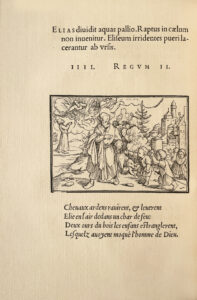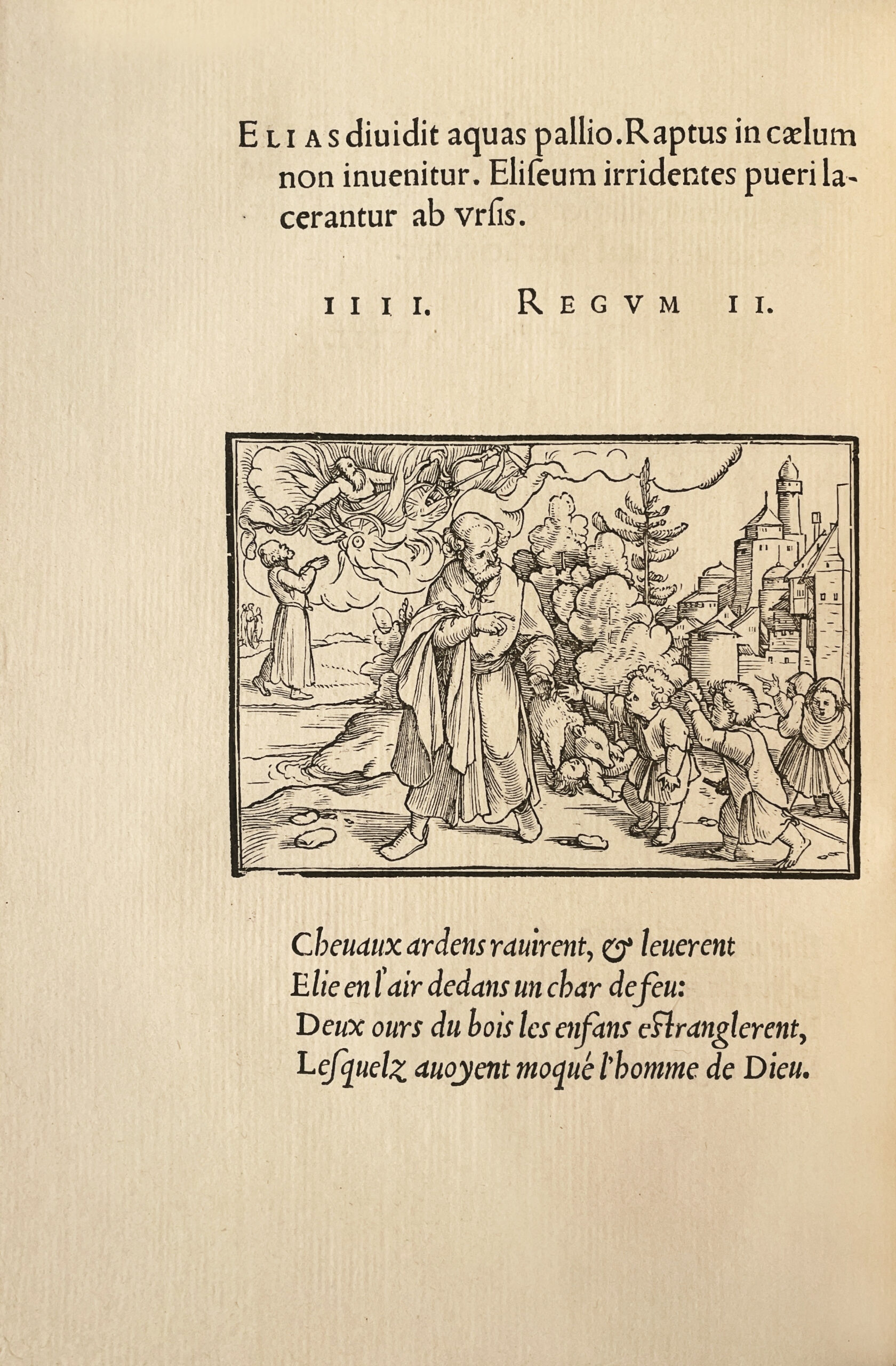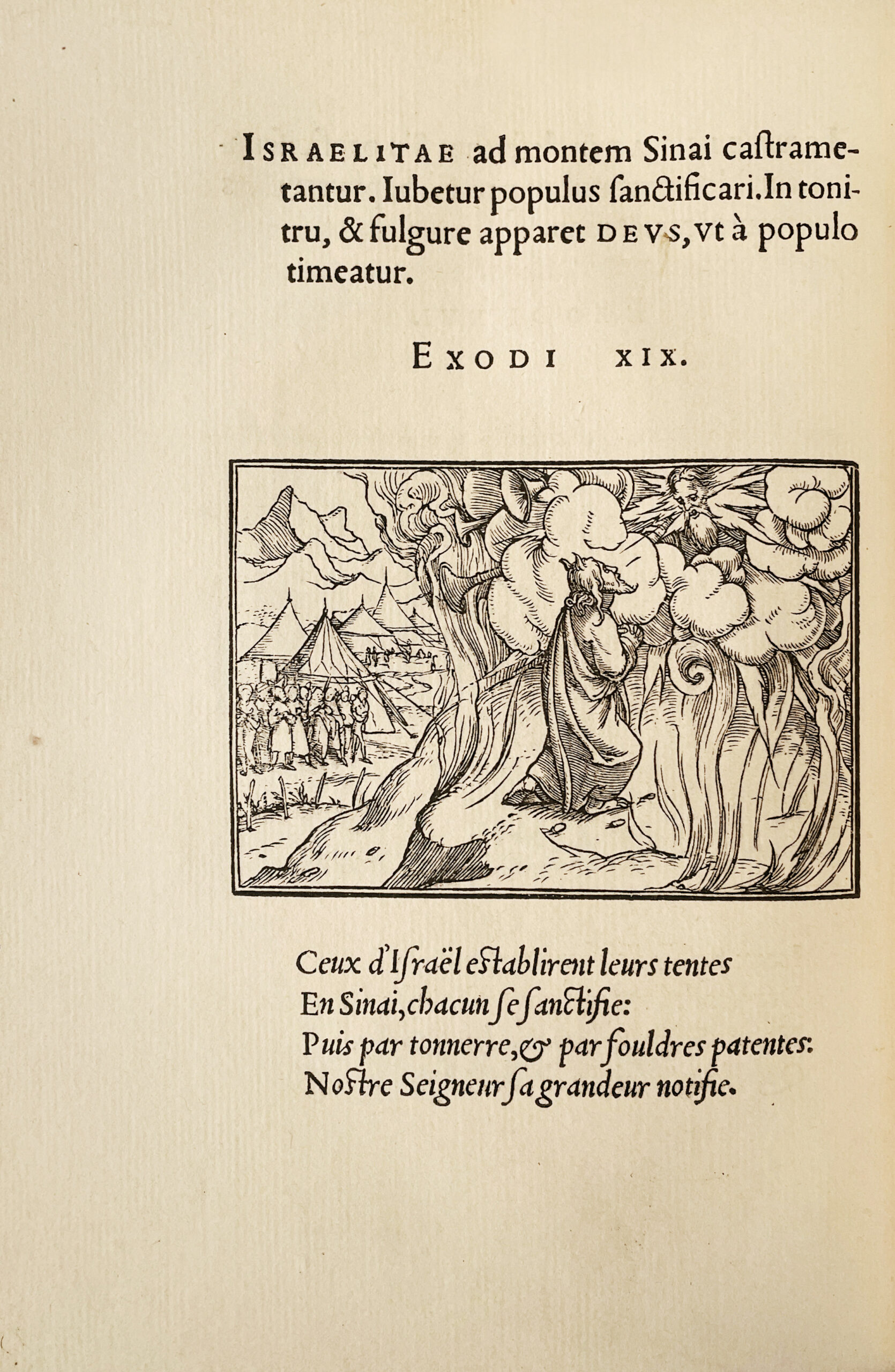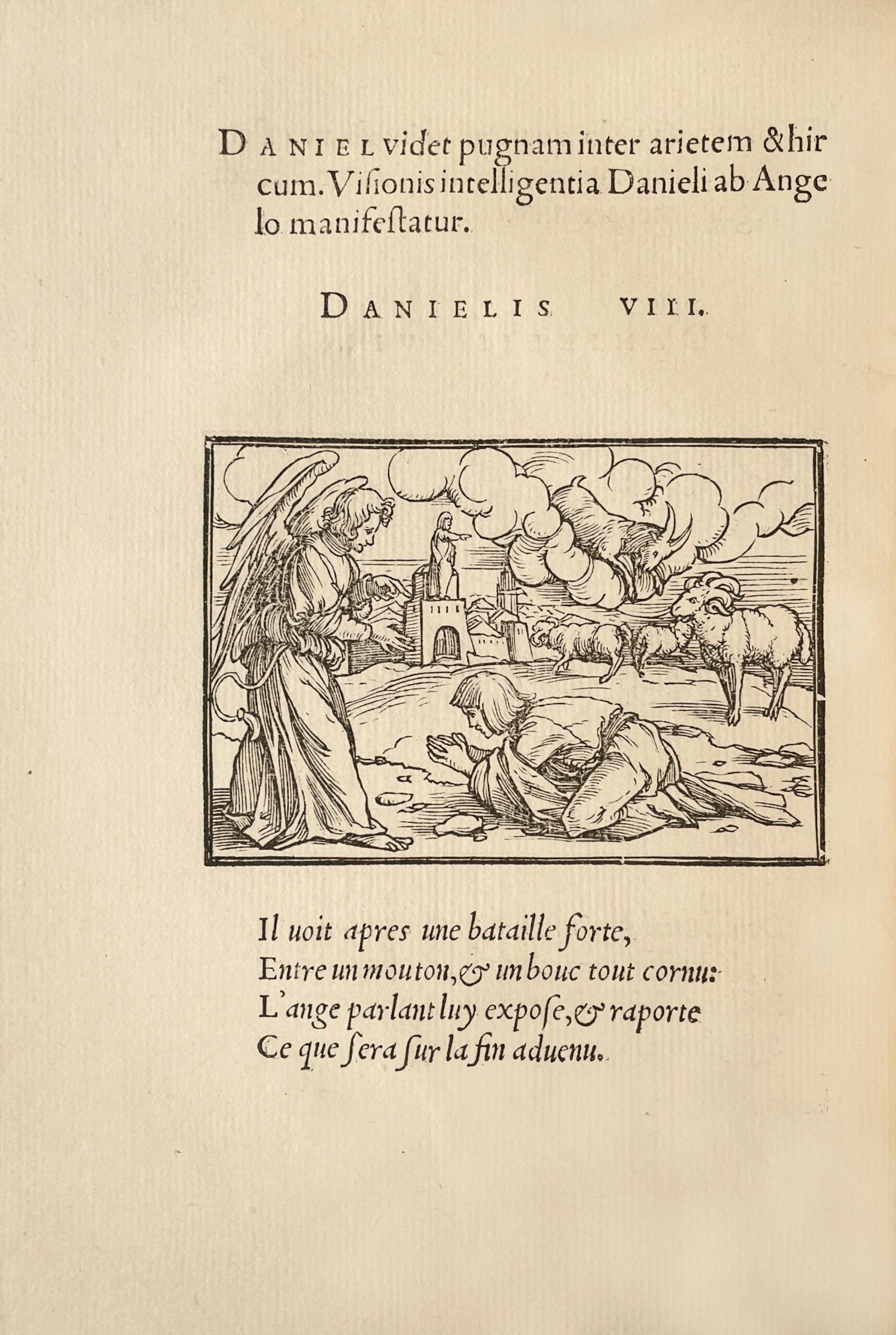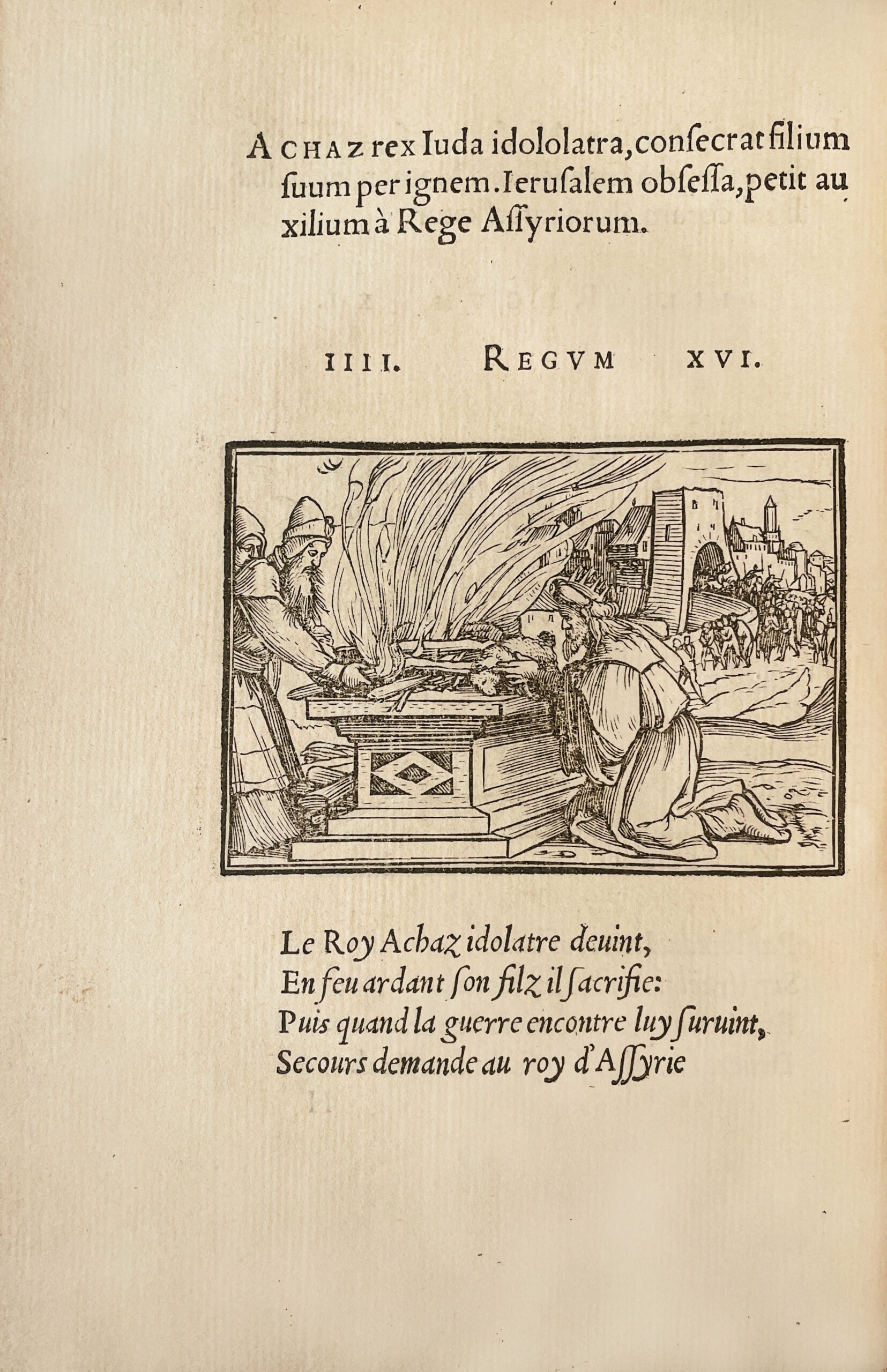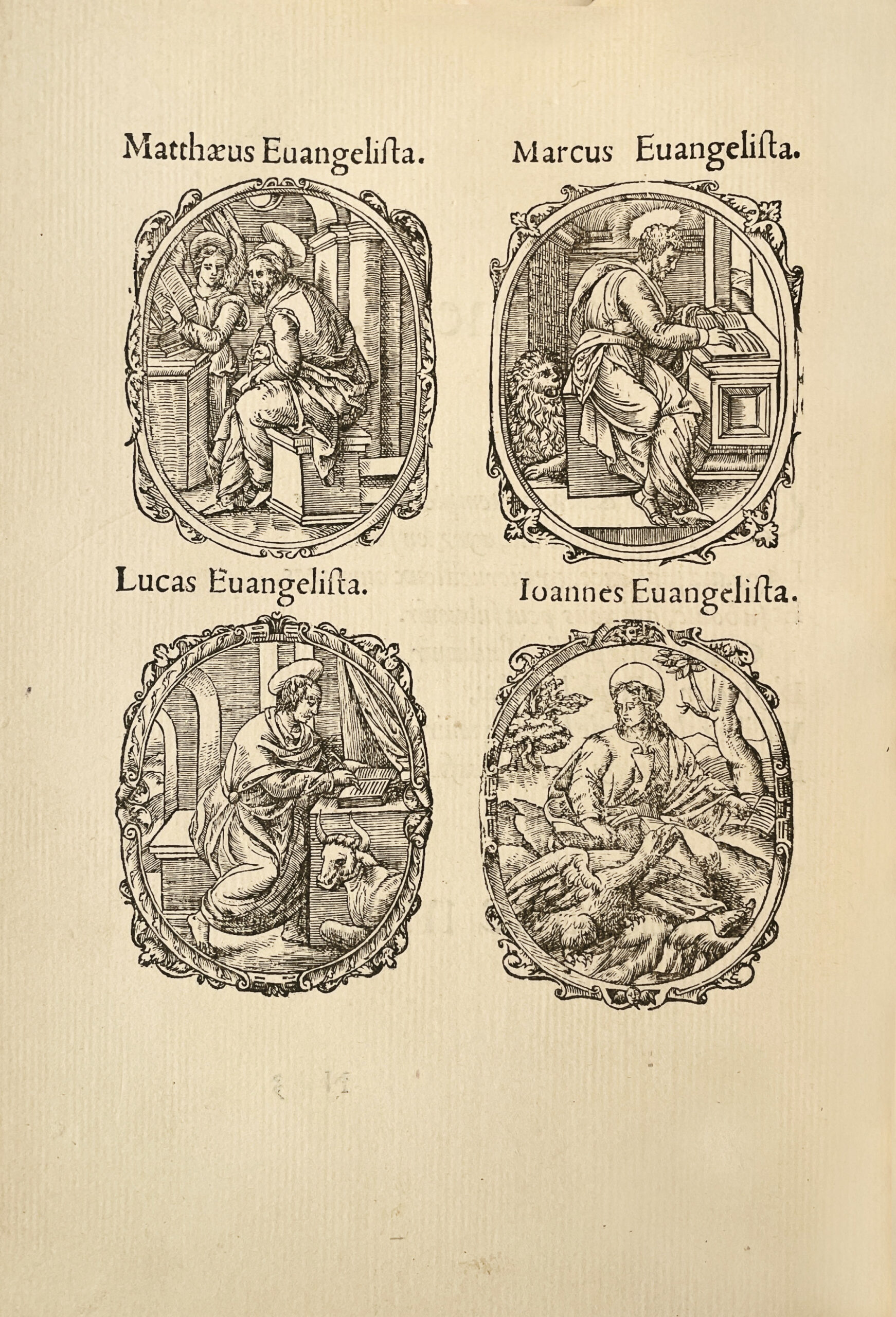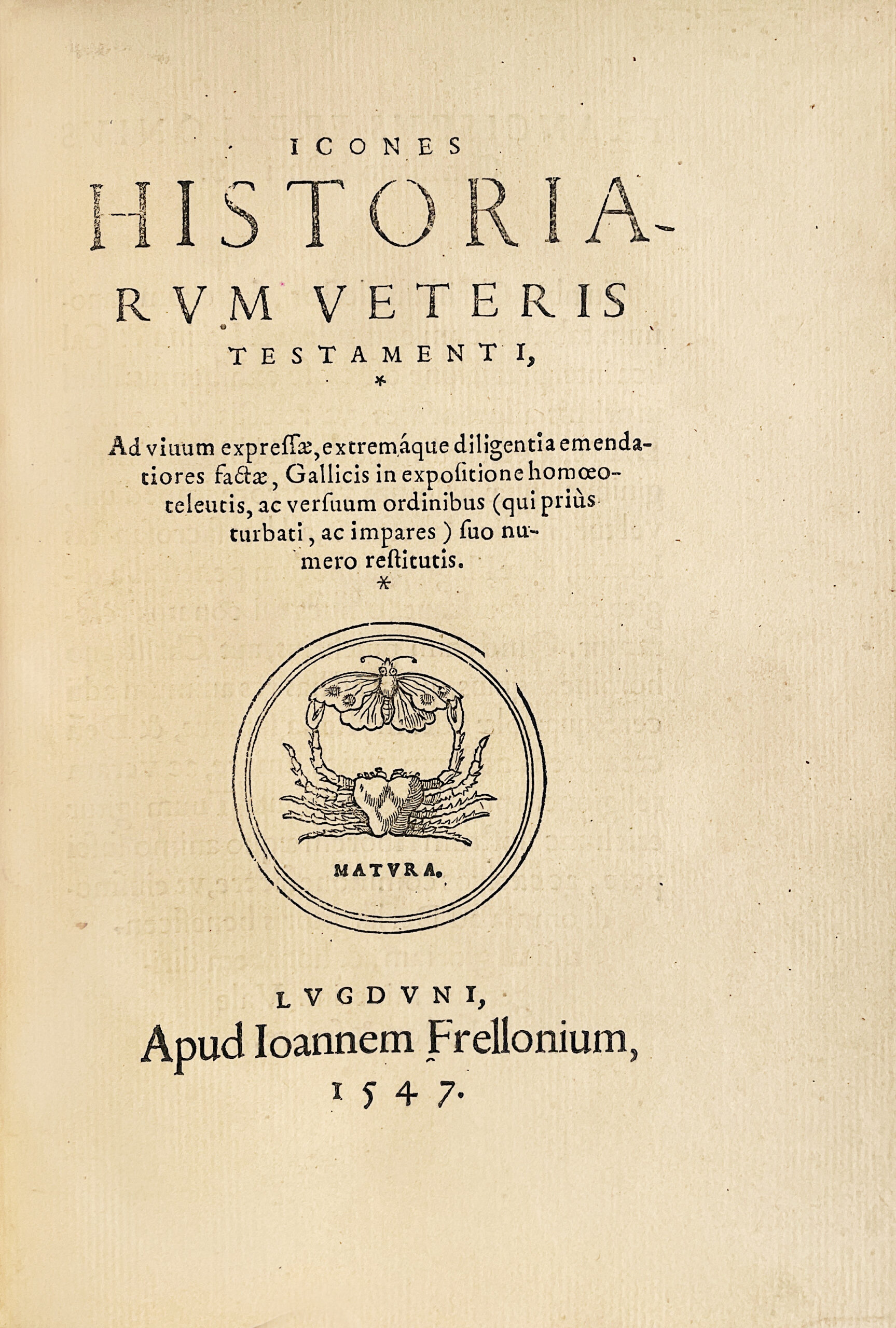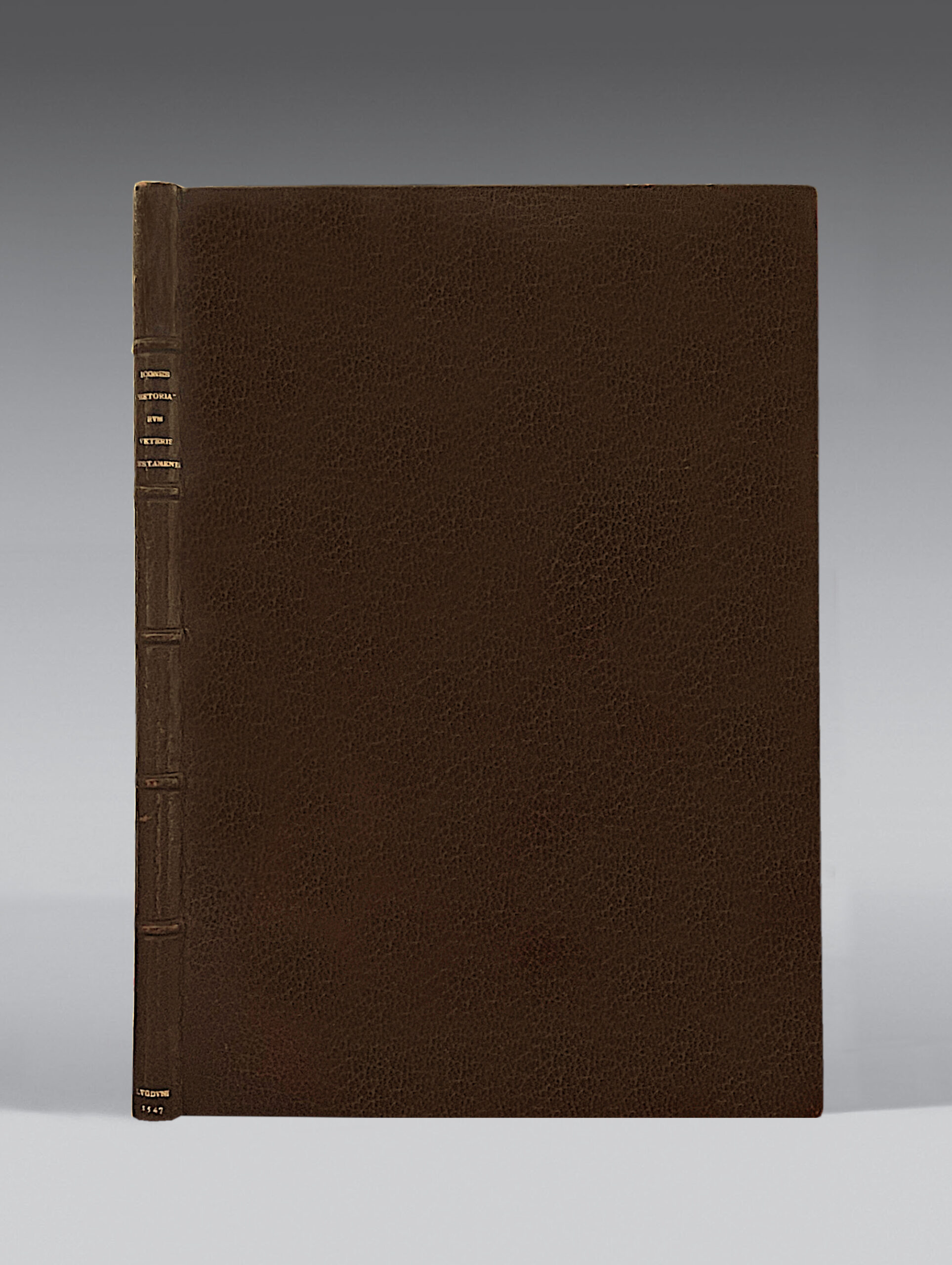Lugduni, Apud Ioannem Frellonium,1547.
Petit in-4 de 52 ff. non chiffrés, sign. A-N, avec 98 figures sur bois, f. L2 réenmargé, maroquin brun janséniste, dos à nerfs, tranches dorées, roulette intérieure dorée. Chambolle-Duru.
198 x 135 mm.
Premier tirage “de ce beau livre” (Brunet, supplément, 647), de la plus extrême rareté avec d’aussi grandes marges (hauteur 198 mm ; il dépasse le superbe exemplaire James de Rothschild.)
Harvard, 281 ; Baudrier, vol. 5, p. 209 ; Rothschild, vol. 1, n°16 ; Duplessis (op. cit. N°276), p. 60-62 ; Woltmann, Holbein, vol. 2, p. 172-173, e ; Bouchereaux, Corrozet, n°127 ; Didot, Essai, col.73.
Chacune des 94 gravures d’Holbein occupe une page avec texte latin au-dessus et quatrains français de Gilles Corrozet au-dessous.
Didot, dans son Essai sur la gravure sur bois analyse longuement ce qu’il nomme « chef-d’œuvre » :
« Les compositions de ce chef-d’œuvre sont du plus haut style, et, comme dans les Simulachres de la Mort, les expressions des figures sont justes et offrent un mélange de simplicité, d’énergie et de naïveté qui caractérisent Holbein ».
“First edition of 1547. There were two editions of the Icones printed by Frellon in 1547. (These are often cited as issues, but the text was entirely reset.) This edition, described by Brunet (III, 252-253) and others as the earlier, may be identified by the fifth line of the title ending in “emenda-“, and the first line of the French text on leaf LIr ending in “uices”. A distinguishing feature of this edition is the use of v for u at the beginning of words in the Latin text. Brunet initiated a certain amount of controversy by quoting from E. Tross a theory that the second edition of 1547 (No. 282) was printed from clichés rather than from the original blocks. Both Hofer (op. cit. No. 276 ; p. 166-167) and Davies (Murray, vol. I, no. 244) reject the idea of clichage. On the basis of breaks in the woodblocks, Davies reverses Brunet’s order of the two editions, but evidence is introduced in the Hofer article to indicate that the condition of the blocks is in this case insufficient to prove priority. Aside from the woodcuts, the changes in the text support the order of editions given by Brunet. Comparison of the French text of 1539 with that of this 1547 edition shows that out of the ninety-four verses, fifty-one have from one to four lines revised. Signatures D and L are the only ones in which the text is unchanged. The text of the other 1547 edition corresponds to this one but has, in addition, seven of the eight quatrains in signature L revised. “(Harvard).
Reconnues pour leur beauté et leur finesse d’exécution, ces Icones sont considérés comme un jalon marquant du livre illustré de la Renaissance.
Superbe exemplaire relié, comme l’exemplaire James de Rothschild, en maroquin janséniste de Chambolle-Duru.
